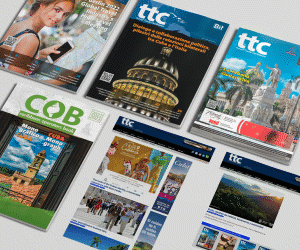By Frank Martin
As year progresses, the forecasts show that Latin America and the Caribbean lead as a single region the reactivation of the world tourism industry.
An essential moment in this regard occurred at the Global Summit in Manila, of the World Travel and Tourism Council (WTTC)
The most recent WTTC Economic Impact report presented at that summit at the end of last April anticipated that some 126 million new jobs will be created in the next decade with 2023 as an excellent starting point.
That report recognized Caribbean and Latin American destinations as forecasts leaders for the summer that is already here for most of the region.
Study showed that five countries were at that time close to a come back to pre-pandemic figures about international arrivals.
Those destinations are headed by Costa Rica, country whose reservations for the next summer period will exceed, according to predictions, by 30% those registered on the same dates in 2019.
In second place is Aruba (+23%), followed in that order by the Dominican Republic. (+16%), Jamaica (+15%) and Mexico (+14%).
Other Caribbean reports have included or mentioned Cuba in the select group.
The traditional annual tourist meeting on that island held in May showed signs of recovery of the island for the first four months of the year in terms of increasing visitors.
National statistics underlined that that Caribbean country received more than 450,000 tourists and hopes to raise that number to two and a half million arrivals throughout 2022, a task that the Cuban sector considers “not impossible” although it is difficult.
For Cuba and other Caribbean destinations Canadian market is once again gaining in size as it was for years, before the pandemic broke out.
There are signs that the summer will see an increase in the dynamics of the leisure industry in these and other destinations.
In Mexico, for example, revenue from cruise bookings, hotels, vacation rentals and tour packages is expected to reach about US$10 billion in 2022, up from US$6.2 billion the previous year.
The gigantic Brazil must exceed this year the 8,000 million US dollars. In Argentina, the sector’s revenues would grow by 76% compared to 2021, totaling almost 3,700 million dollars.
Forecasts see revenue approaching US$2 billion in both Colombia and Chile.
However, specialists call to prevent the region from resting on till now hits.
The president of the Caribbean Hotel and Tourism Association (CHTA), born in Jamaica, Nicola Madden-Greig, believes that the Caribbean tourism sector must do more.
One of the challenges she has mentioned is that this part of the world must find and train its own people to meet the growing labor needs of the industry.
“It is imperative that our members are diligent in staffing their properties and businesses with trained and qualified hospitality professionals,” she told regional news outlets. “There are still some challenges within the region around the labor supply in the market,” she stressed.
One encouragement despite economic uncertainties that still remain due to the pandemic and the war in Ukraine is that international tourism continued its recovery in January 2022, with a much better performance compared to the weakness shown at the beginning of 2021.
During the first month of this year, international tourist arrivals worldwide more than doubled (+130%) compared to January 2021.
There were 18 million more holiday visitors recorded worldwide in the first month of this year.
Certainly, the positive trend continues to be threatened in terms of the world tourism industry. But it is also true that a collapse has not occurred despite the obstacles.
As for the Americas, the start in 2022 was outstanding and the results have not been exhausted.
It is not an unfounded hope in any way that summer will be benevolent.

MORE NEWS











